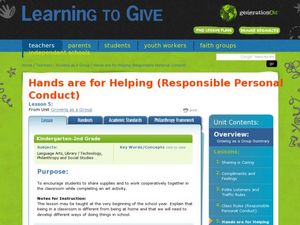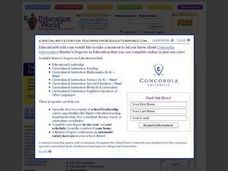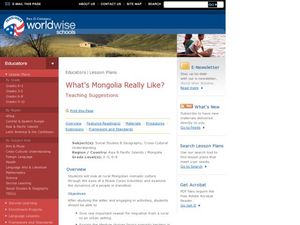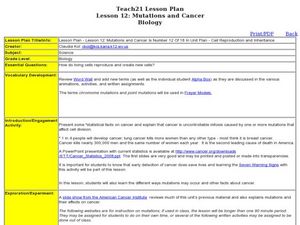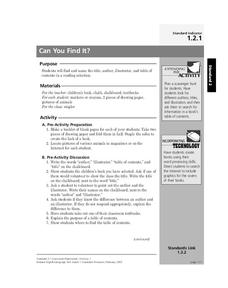Curated OER
Nonfiction Sharing Board
In this nonfiction sharing board worksheet, students complete questions about the books main idea, vocabulary, facts, connections. Students also graph information from the book, go beyond the text, and evaluate how they felt about the...
Curated OER
Hands are for Helping (Responsible Personal Conduct)
Youngster learn the importance of cooperation and sharing through a fun art project! Following a brief introductory discussion in which the class brainstorms how they can use their hands to share, youngster get divided into pairs to...
Curated OER
Painted Story Quilt
Emmulate some of Faith Ringgolds famous painted story quilts in your classroom. Have your class choose a story or you choose one for the whole class to portray. They will select their favorite scene to paint onto their story quilt. What...
Curated OER
Nuts for Peanuts: Peanut Plants, Peanut Timeline, and Peanut-s-timation!
Students complete a timeline. In this peanuts instructional activity, students read A Short Peanut History and use this resource to make a timeline of the history of the peanut. Students can grow peanuts in the classroom or make various...
Curated OER
What's Mongolia Really Like?
Students discover the people of Mongolia. In this social studies lesson plan, students look at the Mongolian nomadic culture by reading a letter written by a member of the Peace Corps. They describe the different types of communities...
Curated OER
American Heritage Themes
Pupils define freedom, unity, progress, and responsibility in relation to American Heritage. They explore the origin of how American Heritage was developed and ways in which they can continue it today. They also determine ways they can...
Curated OER
School Forest
Sixth graders explore the concept of biodiversity. In this biodiversity lesson, 6th graders discover a variety of planets and animals that live in forests, and how a rotting log benefits that environment. Students also locate seven...
Curated OER
Sizing Cells
Young scholars examine how living cells reproduce to make new cells. In this cell reproduction lesson students complete a lab activity and answer questions.
Curated OER
Mutations and Cancer
Students study how cancer cells mutate and affect cell division. In this investigative lesson students view a PowerPoint presentation learn the seven warning signs of cancer.
Curated OER
A Primary Source Picture Book
Travel through Europe with ten-year-old Teddy Roosevelt in this writing activity, which uses the picture book My Tour of Europe: by Teddy Roosevelt, by Ellen Jackson. After reading the book, readers compare it to passages from The...
Curated OER
Effects of Oil Spills on Environment and Marine Life
Students explore oceanography by conducting an environmental experiment in class. In this oil spill lesson, students discuss the human need for oil and what is at stake when we drill for oil in our oceans. Students read a book in class...
Curated OER
Can You Find It?
Plan a Parts of a Book scavenger hunt. Begin by giving your young adventurers a book, and asking them to find the title, author, illustrator, and table of contents. After a discussion of the purpose of each of these items, class members...
Curated OER
The English House of Commas
This nicely-designed presentation does an excellent job of introducing the comma and its many uses. Each of the slides shows different ways in which the comma is used. Learners are given a chance to practice what they have learned in the...
Alabama Learning Exchange
WATER You Doing to Help?
Auntie Litter is here to educate young scholars about water pollution and environmental stewardship! Although the 15-minute video clip is cheesy, it's an engaging look at the water cycle and conservation. Learners start by illustrating...
National Book Network
A Day with No Crayons
Colors and crayons are the inspiration for this collection of activities! Kids illustrate the real world, come up with their own names for colors, make their own crayons (with teacher assistance), create artwork they can eat, and more.
Curated OER
Introduction Paragraph
Key parts of an introductory paragraph (grabber sentence, connecting information, thesis) are highlighted in a presentation that uses color-coded sample paragraphs to illustrate how these parts combine to form a complete opening paragraph.



